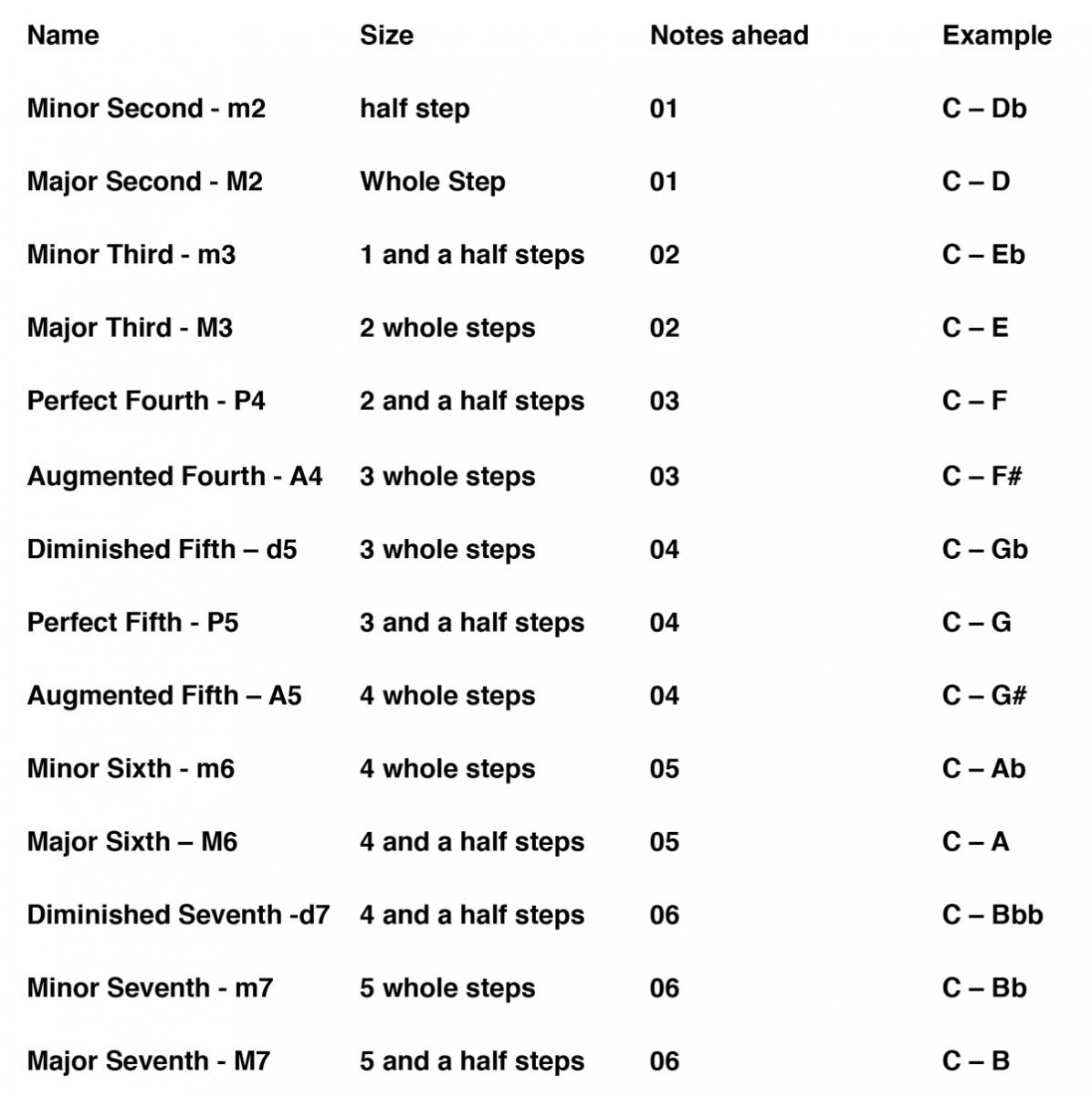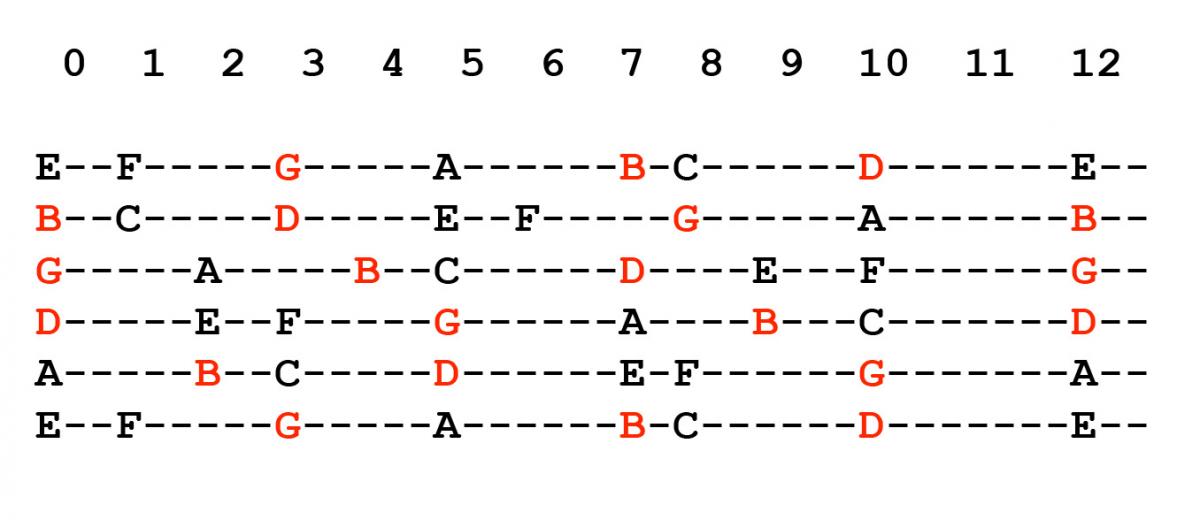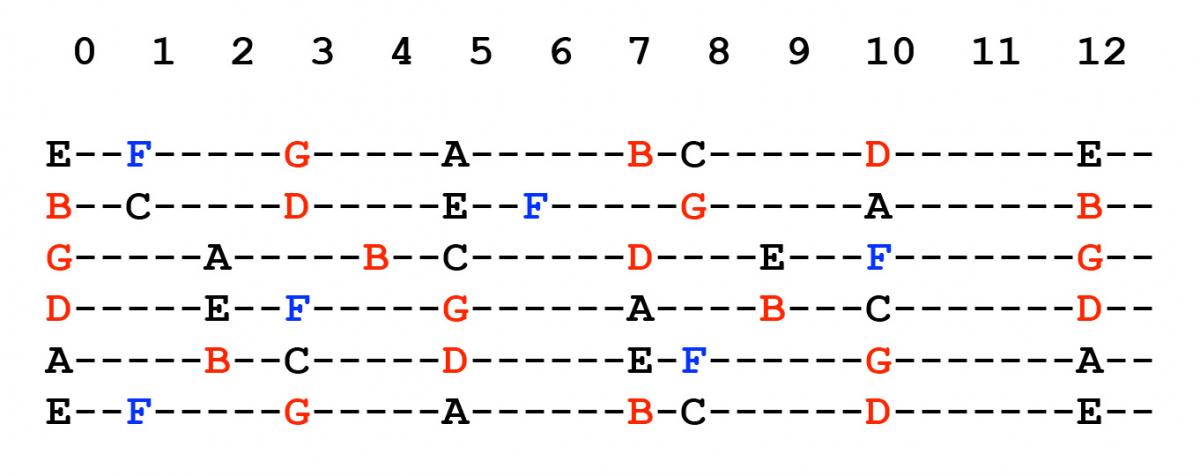Intervals: Theory and Application
Let's start with some general statements about intervals:
- An interval is the distance between two notes. The closest possible interval is the unison (two notes on the same pitch – C / C).
- Intervals can be described as Major (M), Minor (m), Perfect (P), Augmented (A),
- and Diminished (d).
- Intervals come in various sizes: 2nds, 3rds, 4ths, 5ths, 6ths, 7ths and octaves.
Here is a chart with the intervals:

We all have seen the information above somewhere/somehow, but very few take
the time to really understand and apply to their playing! The first thing that
every musician that is interested in learning intervals should do is to become
familiar with the chart above by doing simple exercises.
Pick any note you want and figure out some simple intervals. For example:
What is the Major Second of the Note G?
Major Second = One note ahead + Whole Step Apart = A
What is the Perfect Fifth of the Note G?
Perfect Fifth = Four notes ahead + 3 whole steps and a Half apart = D
And don't forget to find those intervals on the fretboard and play them! It is very
important to train your ears to hear those distances on your instrument. (Please
make sure your instrument is absolutely in tune!)
After you spend some time practicing and playing simple exercises it is time to
build chords. Every chord that we play on the guitar follows a formula. For example:
Major Chords are formed by: Tonic/root note + Major Third + Perfect Fifth.
Therefore a G major will be formed by G + B + D
So if you know where the notes are on the fretboard (Check Whole Step/Half
Step Article), now you can play a lot of different variations of a G major chord:

Another great advantage of mastering your intervals is to be able to add notes to
chords you already know.
Let's say you know where all your G major chords are on the guitar.
Now you want to play a G7, which is formed by the same formula PLUS a minor seventh interval:
G7 - Tonic/root note + Major Third + Perfect Fifth + minor Seventh
Therefore a G7 major will be formed by G + B + D + F
 Work with those simple ideas first and stay tuned for the next article where we will
Work with those simple ideas first and stay tuned for the next article where we will
take those ideas above to the next level!
Thanks.
Related:
- Questions for Rod Ferreira? Send him a message on his lesson booking page here.
- Start with basic music theory.
- Need a teacher? Rod Ferreira is available for one-on-one guitar lessons online. You can view our entire list of available teachers here.
- Learn Guitar
